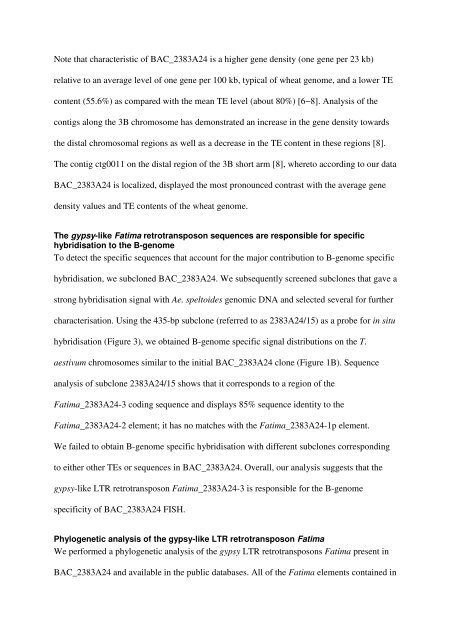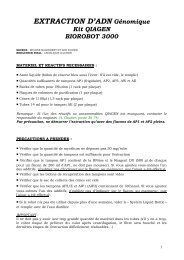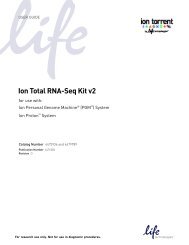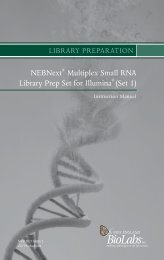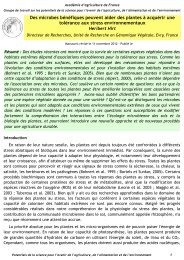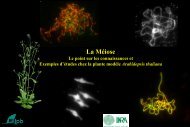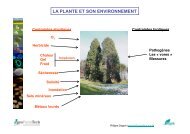The impact of Ty3-gypsy group LTR retrotransposons ... - URGV - Inra
The impact of Ty3-gypsy group LTR retrotransposons ... - URGV - Inra
The impact of Ty3-gypsy group LTR retrotransposons ... - URGV - Inra
Create successful ePaper yourself
Turn your PDF publications into a flip-book with our unique Google optimized e-Paper software.
Note that characteristic <strong>of</strong> BAC_2383A24 is a higher gene density (one gene per 23 kb)<br />
relative to an average level <strong>of</strong> one gene per 100 kb, typical <strong>of</strong> wheat genome, and a lower TE<br />
content (55.6%) as compared with the mean TE level (about 80%) [6−8]. Analysis <strong>of</strong> the<br />
contigs along the 3B chromosome has demonstrated an increase in the gene density towards<br />
the distal chromosomal regions as well as a decrease in the TE content in these regions [8].<br />
<strong>The</strong> contig ctg0011 on the distal region <strong>of</strong> the 3B short arm [8], whereto according to our data<br />
BAC_2383A24 is localized, displayed the most pronounced contrast with the average gene<br />
density values and TE contents <strong>of</strong> the wheat genome.<br />
<strong>The</strong> <strong>gypsy</strong>-like Fatima retrotransposon sequences are responsible for specific<br />
hybridisation to the B-genome<br />
To detect the specific sequences that account for the major contribution to B-genome specific<br />
hybridisation, we subcloned BAC_2383A24. We subsequently screened subclones that gave a<br />
strong hybridisation signal with Ae. speltoides genomic DNA and selected several for further<br />
characterisation. Using the 435-bp subclone (referred to as 2383A24/15) as a probe for in situ<br />
hybridisation (Figure 3), we obtained B-genome specific signal distributions on the T.<br />
aestivum chromosomes similar to the initial BAC_2383A24 clone (Figure 1B). Sequence<br />
analysis <strong>of</strong> subclone 2383A24/15 shows that it corresponds to a region <strong>of</strong> the<br />
Fatima_2383A24-3 coding sequence and displays 85% sequence identity to the<br />
Fatima_2383A24-2 element; it has no matches with the Fatima_2383A24-1p element.<br />
We failed to obtain B-genome specific hybridisation with different subclones corresponding<br />
to either other TEs or sequences in BAC_2383A24. Overall, our analysis suggests that the<br />
<strong>gypsy</strong>-like <strong>LTR</strong> retrotransposon Fatima_2383A24-3 is responsible for the B-genome<br />
specificity <strong>of</strong> BAC_2383A24 FISH.<br />
Phylogenetic analysis <strong>of</strong> the <strong>gypsy</strong>-like <strong>LTR</strong> retrotransposon Fatima<br />
We performed a phylogenetic analysis <strong>of</strong> the <strong>gypsy</strong> <strong>LTR</strong> <strong>retrotransposons</strong> Fatima present in<br />
BAC_2383A24 and available in the public databases. All <strong>of</strong> the Fatima elements contained in


